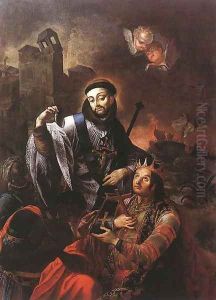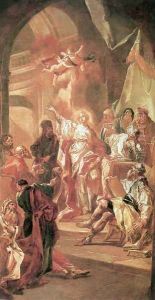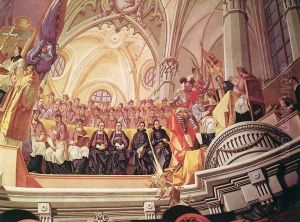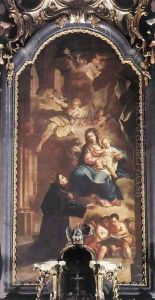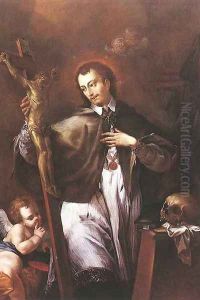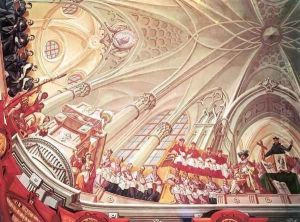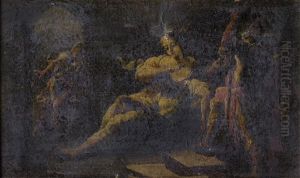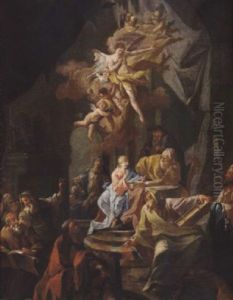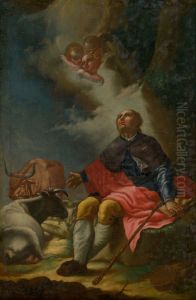Johann Lucas Kracker Paintings
Johann Lucas Kracker, born in 1719, was an artist whose work remains a significant part of the Baroque tradition in Central Europe. Despite the scarcity of detailed biographical information compared to more widely studied artists of his era, Kracker's contributions to the art world during the 18th century have been appreciated through the surviving pieces of his work and the records of his commissions. His life and career offer insight into the artistic movements and cultural contexts of his time.
Kracker's career is often highlighted by his role as a fresco painter, where his work adorned the ceilings and walls of churches, monasteries, and palaces across the Austro-Hungarian Empire. His style, deeply rooted in the Baroque tradition, is characterized by dramatic expressions, vibrant colors, and a dynamic sense of movement, all of which are typical of the period's artistic endeavors to evoke emotional responses and convey religious and mythological narratives in a visually compelling manner.
Notably, Kracker's work in the Esztergom Basilica, among other ecclesiastical commissions, stands as a testament to his skill and the esteem in which he was held during his lifetime. His frescoes in these sacred spaces exemplify the Baroque's intricate relationship with Catholicism and the Counter-Reformation, aiming to captivate and inspire the faithful through the power of visual art.
Despite the challenges inherent in tracing the full scope of Kracker's career and influence due to the passage of time and historical upheavals that have led to the loss or damage of many works of art from this period, his surviving frescoes continue to be studied and admired for their artistic merit and historical significance. Johann Lucas Kracker's death in 1779 marked the end of a career that had significantly contributed to the rich tapestry of 18th-century European art. His legacy, preserved in the fragments of his creations that have endured, continues to offer insight into the Baroque period's complex interplay of art, religion, and society.
